|
|
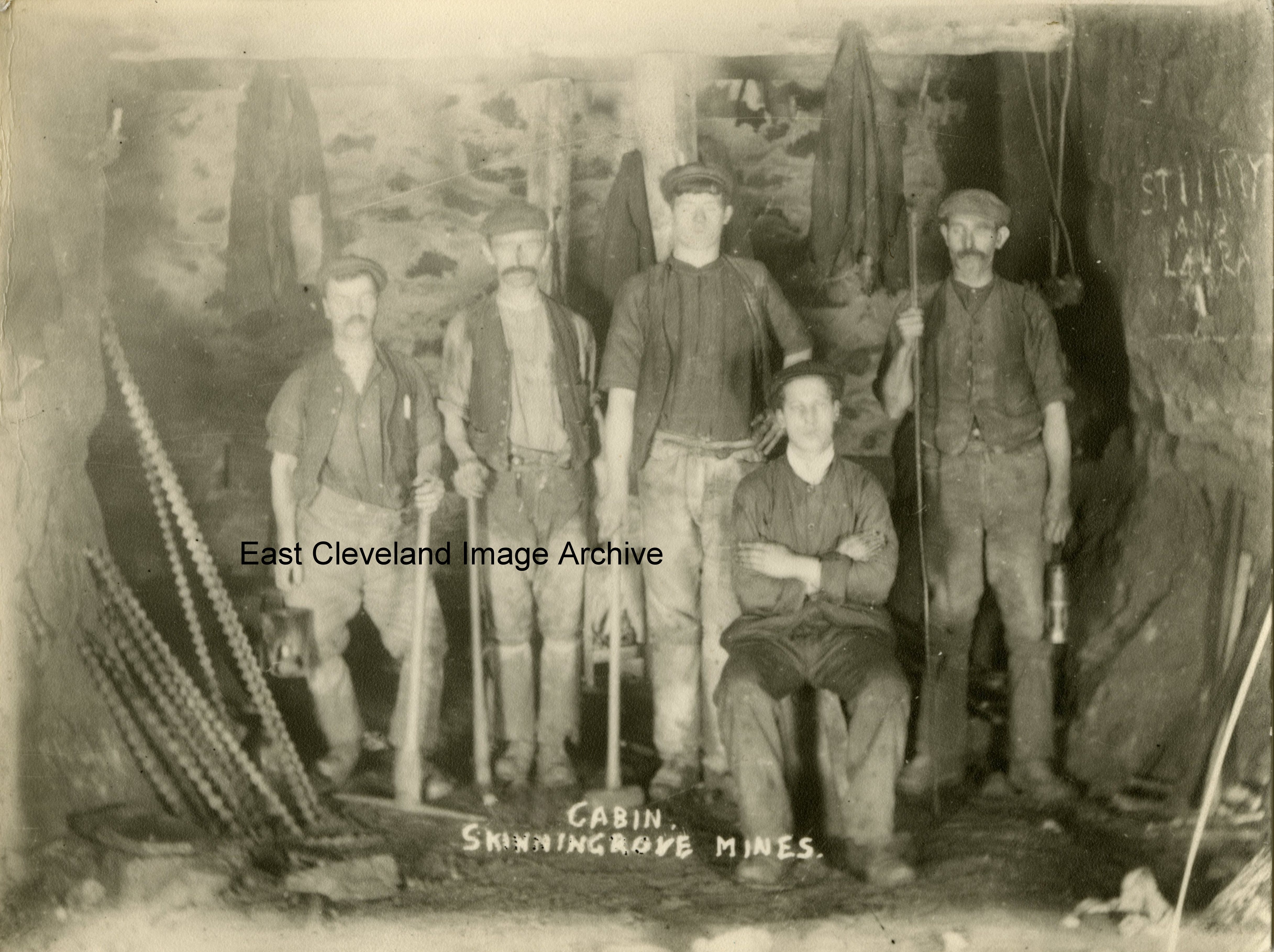
An ‘at work’ view of a group of miners – the lighting is obviously from magnesium flash placed at ground level. Now known to be a postcard dated 1910 and sent from Micklow Terrace in Loftus. It is a view of the ‘Deputies Cabin’ at Loftus Mine; Deputies were in charge of a District (specific mining area of an ironstone mine). Notice the conventional midge on the left and the Davy safety lamp of the Deputy on the right (holding the roof probe); also the rack of drill bits leaning against the wall on the left. Can anybody provide names?
Image courtesy of Jean Hall and Olive Bennett.
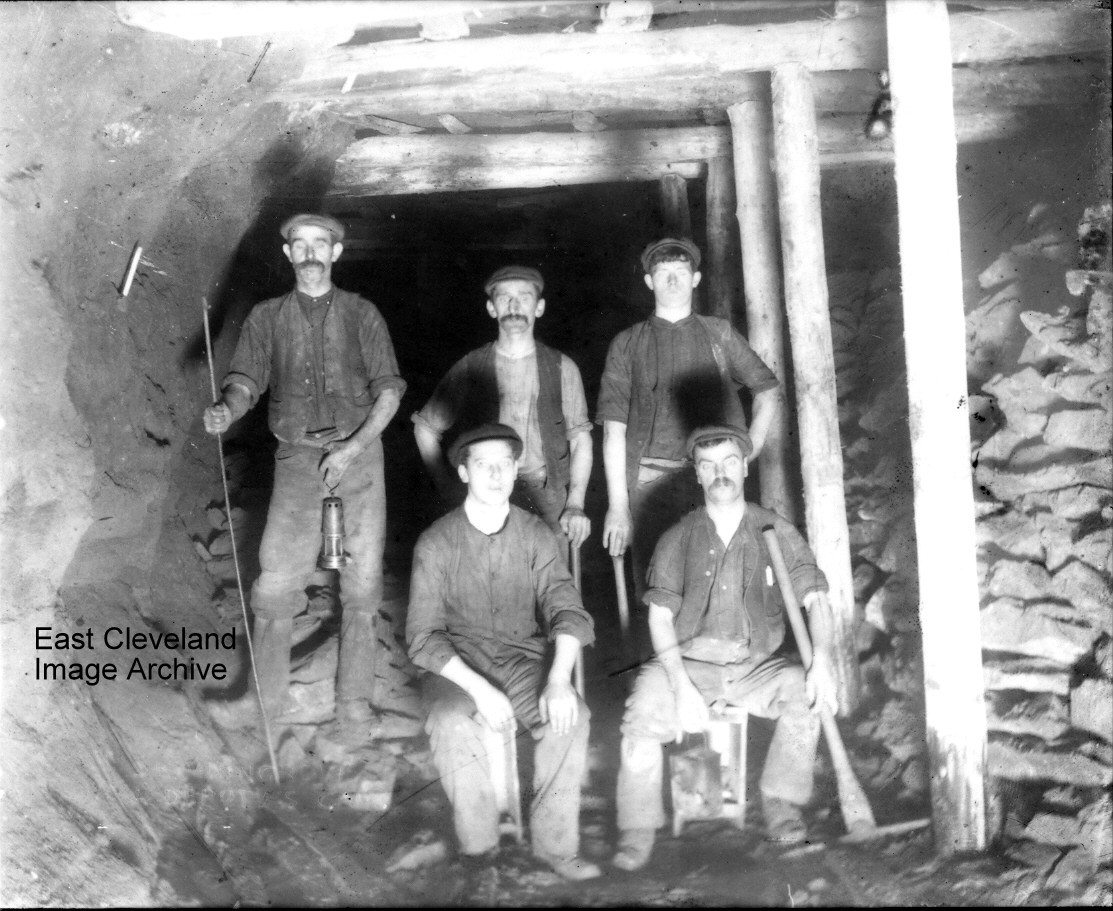
Five men taking a break from mining to have their photograph taken, we can clearly see the pit props and the candle held in place with boulder clay. We can surmise the man on the left of the photograph is the deputy, as he is the one with the Davy lamp and the roof probe, the other men would have been known as fillers. The front two men are sitting on their midges, a three-sided box with a candle in it (the only light they had to work by). No safety helmets are worn by any of the men as the compulsory wearing of safety helmets had not yet been introduced.
This is the same group of men that we see in another underground photograph.
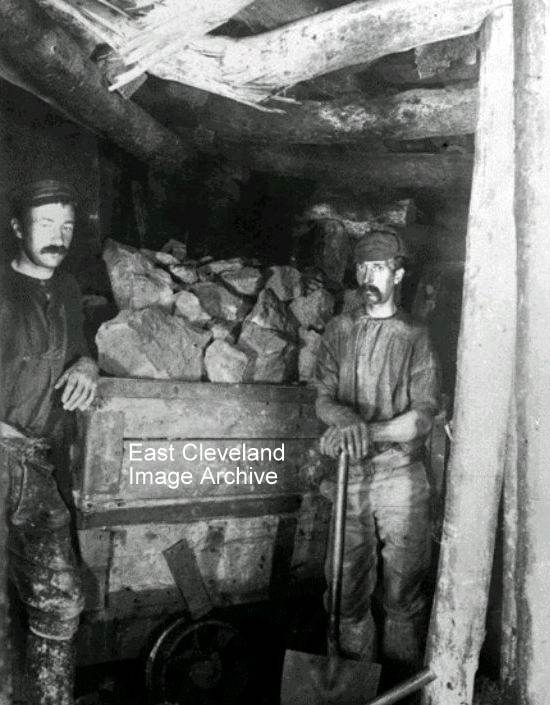
A miner and his loader and a full tub of stone; overhead two shattered roof supports. The Archive’s question yet again is; does anybody know their names?
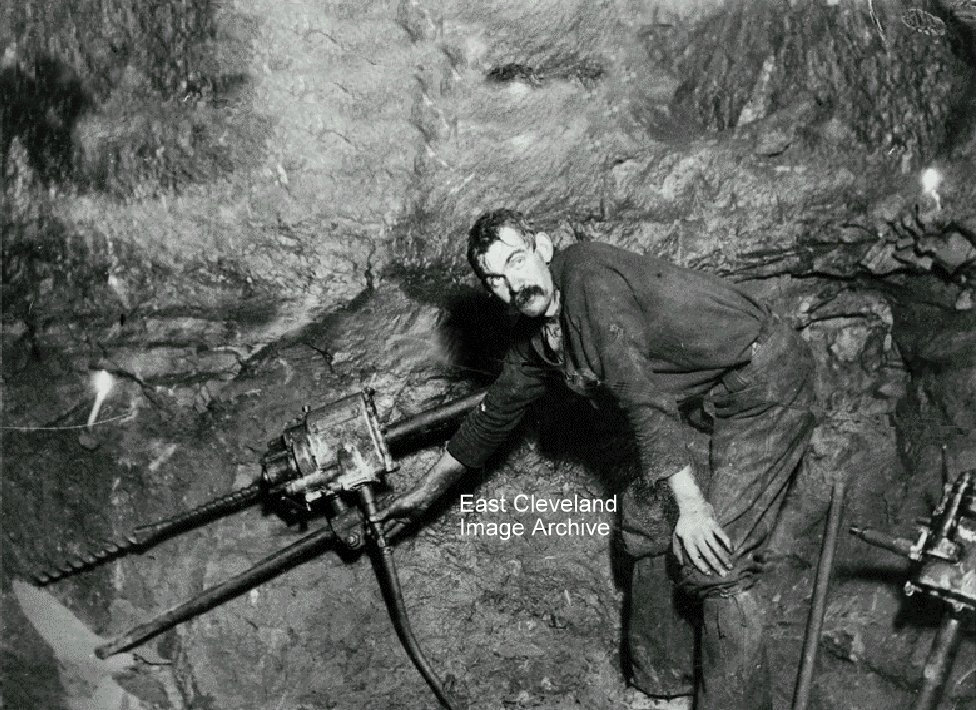
All through the life of the mines there was a constant battle to increase yield without increasing manpower. Ironstone was won by blasting a portion of the rock face out and then loading the stone into a tub (or sett) to be taken back to the heapstead. To place the shot the miner had to create a hole into which he could place his powder, detonator and fuse. This was the time-consuming part of the job initially carried out by hand; then by hand ratchet drill; then by either compressed air, petrol or electric drill. This obviously posed photograph is a record of the testing of just one such drill. This picture and the other one entitled similarly are two out of a group of four pictures taken about 1900 when Whitecliffe Mine was re-opened and this compressed-air drill was tried out underground. From the earliest times the hand ‘jumper’ drill was used, in 1875 the first compressed-air powered rotary drill was invented. Loftus Mines introduced such drills in 1891 but they were big and cumbersome so this one illustrated was tested but never adopted.
Later electric drills were used in Loftus but about 1895 hand-operated rotary drills were introduced (the so-called ‘ratchet’) and eventually superseded the powered drills. Loftus Mines, however, were never as mechanised as the Dorman Long mines in Cleveland. (words by Simon Chapman).
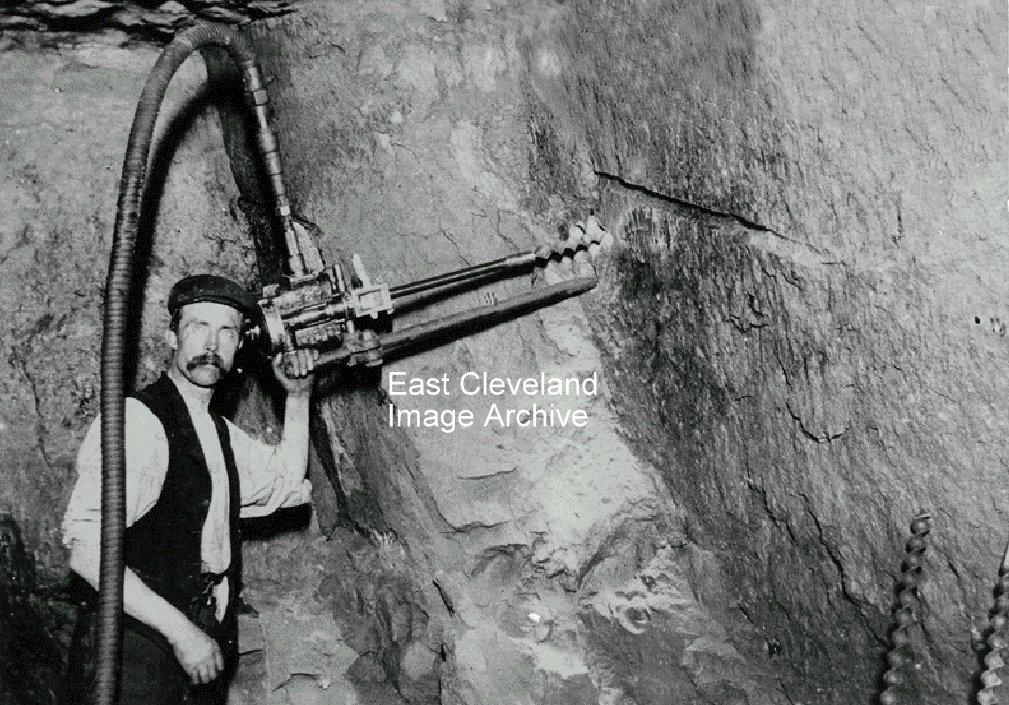
Here we have another type of drill being tested and another photographic record of the event. The backlash of this automation was that fewer men were required to produce the same (or better) yield and a lot of miners were downgraded (with loss of pay and status) to loaders/drivers or simply made unemployed. Once again does anyone know the type of drill and the name of the miner?
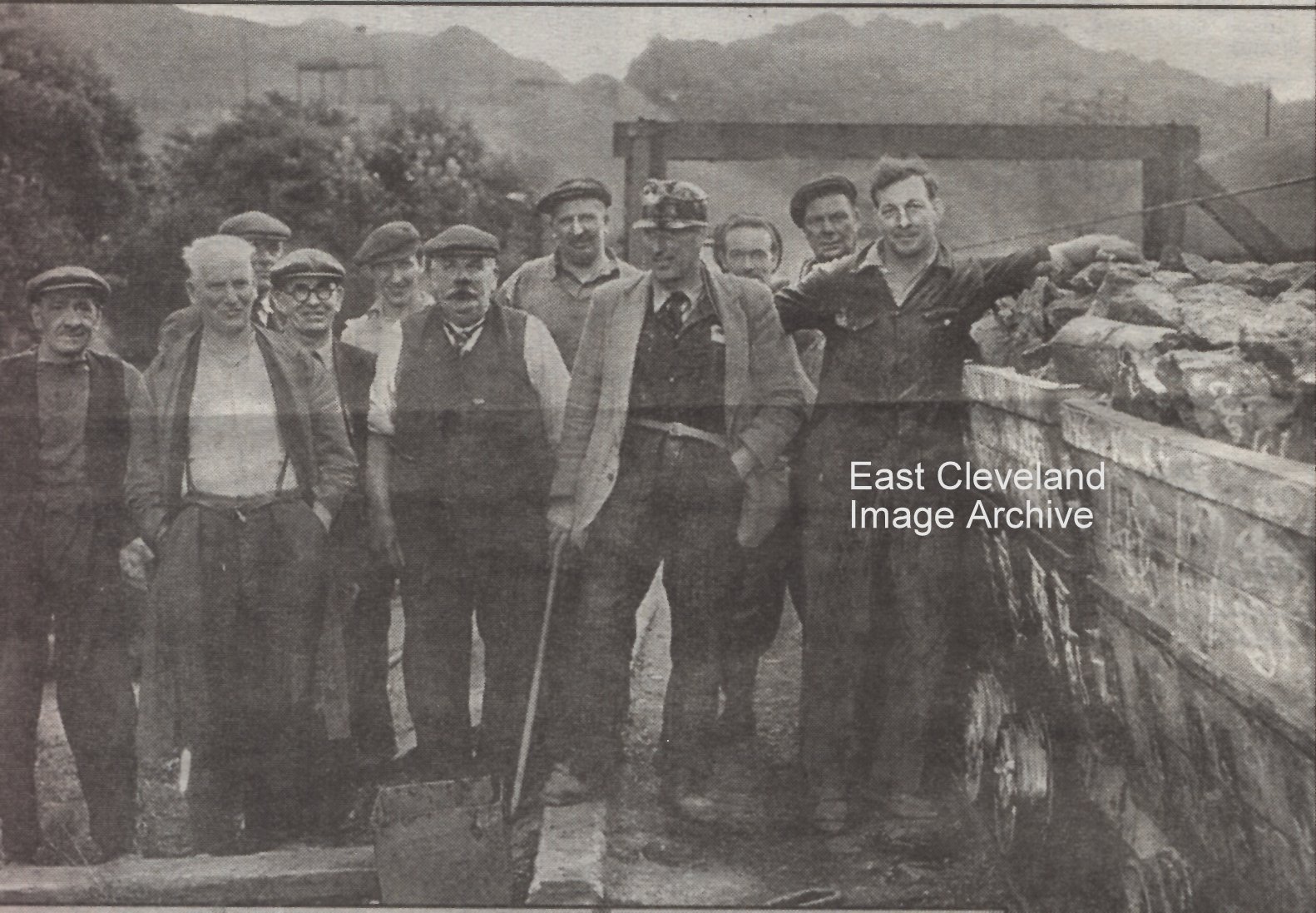
Men of the last shift at Loftus Mine pose with their handiwork. The closing of the mines destabilised a lot of the local communities as people drifted away to find new jobs and eventually moved to be nearer their new place of work.
Back Row: Allan Creswick, Harold Found, Cyril Gibson (blacksmith’s striker), Walter Wilson, Bill Dawson, Don Breckon.
Front Row: Jim Tinkler, Walt Sayers (check weighman), George Adamson, Harold Ralph ‘Lal’ Gibson (blacksmith), Jim Easton (holder of the Daily Herald Award for Industrial Heroism for rescuing Jim Tinkler in an incident which witnessed the death of Jim Trousdale), Allan Readman.
Thanks to Eric Johnson, Joanne Cooper and Cazzi Kerr for names.
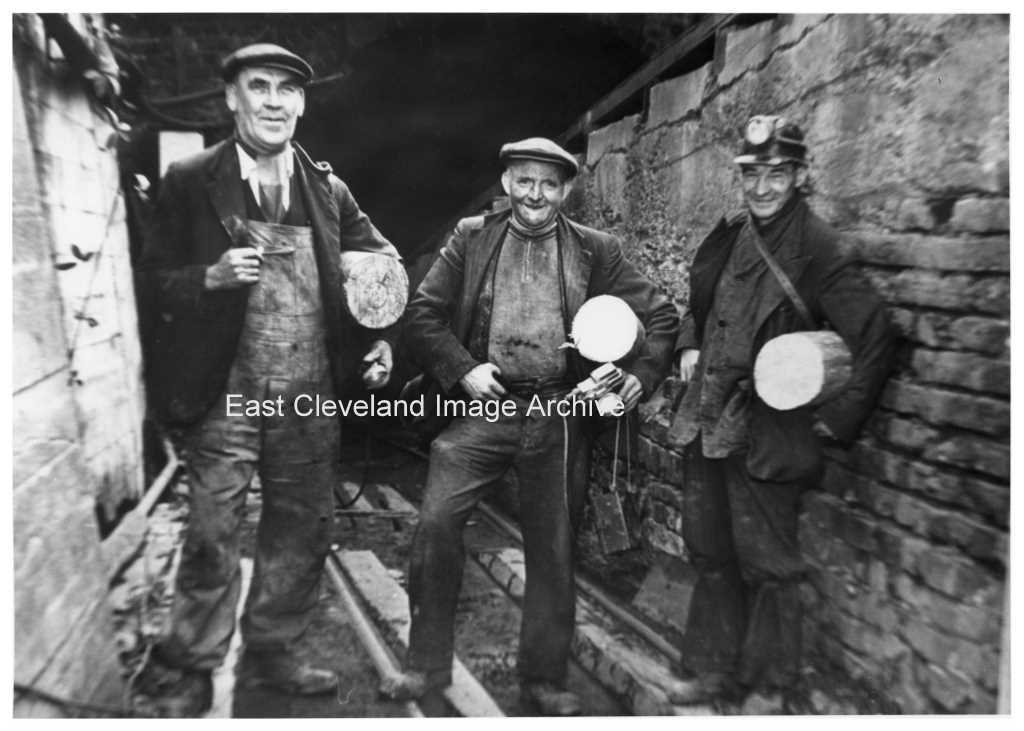
The last three men to leave Loftus mine, (South drift), on 27th September, 1958:
Jack W. Cooke, Arthur (Humpy) Thompson, and William Adamson.
Image courtesy of Keith Bowers.
|
|







Recent Comments